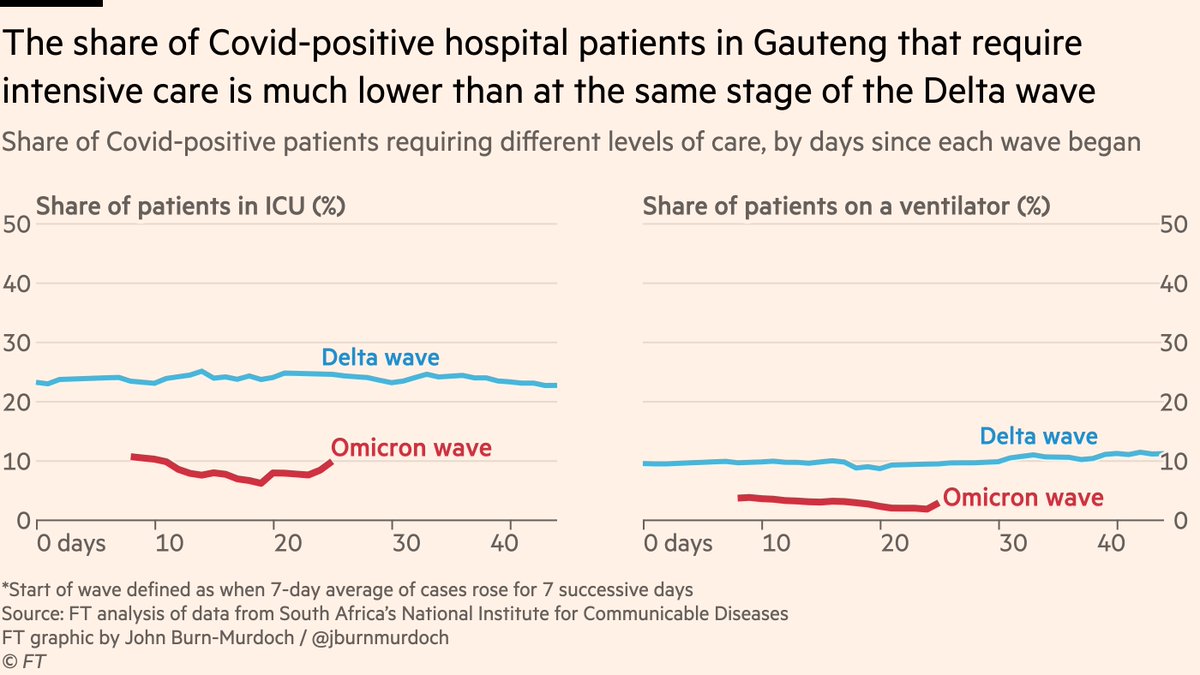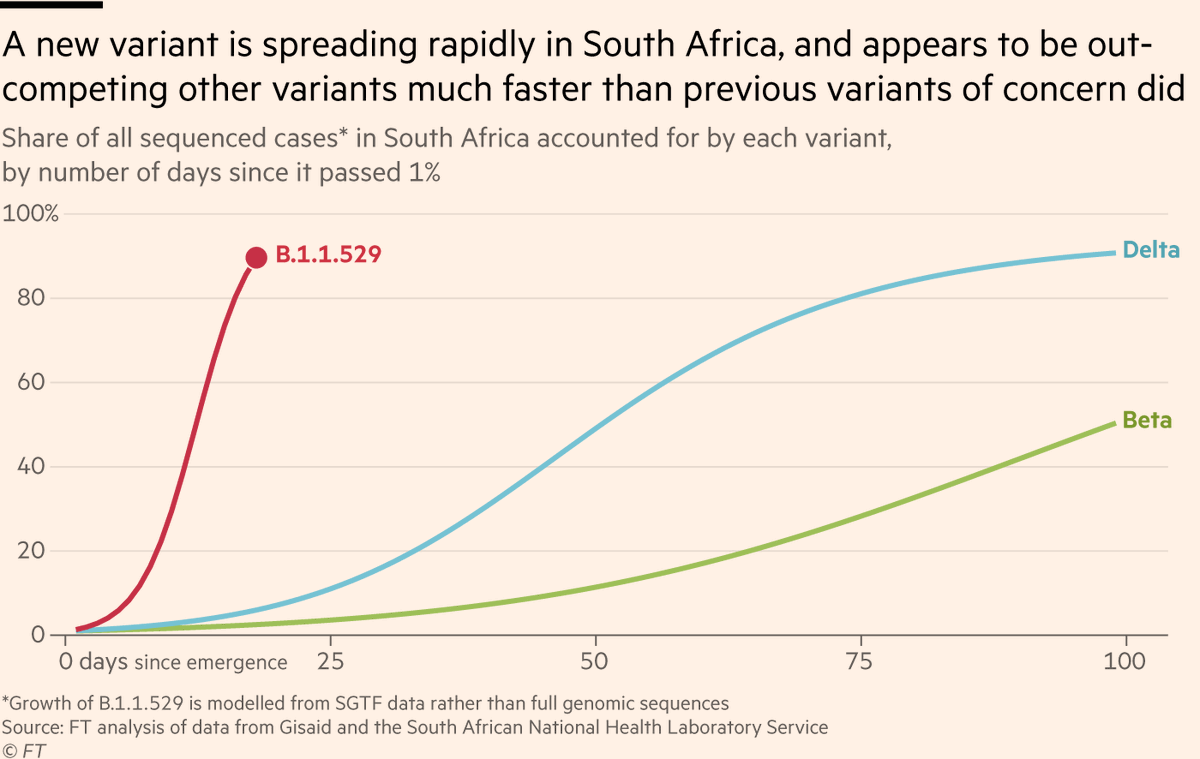
I think we may need to recalibrate our idea of typical case numbers as Omicron takes off.
Here’s what UK cases could look like *in the next week or two alone* if Omicron continues to double every 3 days (some actually estimate faster growth)
Story: ft.com/content/2b309e…
Here’s what UK cases could look like *in the next week or two alone* if Omicron continues to double every 3 days (some actually estimate faster growth)
Story: ft.com/content/2b309e…

When cases start surging, it will be more important than ever to use the right data to track the extent of severe disease.
I’ll be using this chart: the total number of people in critical-care beds *for any reason, not just Covid*.
It’s excess deaths, but for hospital pressure.
I’ll be using this chart: the total number of people in critical-care beds *for any reason, not just Covid*.
It’s excess deaths, but for hospital pressure.

(you may recognise that from this animated version last year, which comprehensively debunked the myth that "hOsPiTaLs ArE aLwAyS fUlL aT wInTeR")
https://twitter.com/jburnmurdoch/status/1347200855376875523
The data from the dashboard on Covid-positive hospital admissions and patient numbers obviously remains very useful, but "excess critical care patients" comes into its own with Omicron where the number of patients in hospital *with Covid* but not *for Covid* is likely to rise.
The metric we have always been most concerned about is pressure on the NHS, and this chart tracks exactly that. 

What we’re holding out hope for is that England’s 'immunity wall' — HT @DevanSinha — will hold up well, and that the share of cases ending up in hospital or worse will be kept low.
Exactly how low will be critical.
Exactly how low will be critical.

• • •
Missing some Tweet in this thread? You can try to
force a refresh












